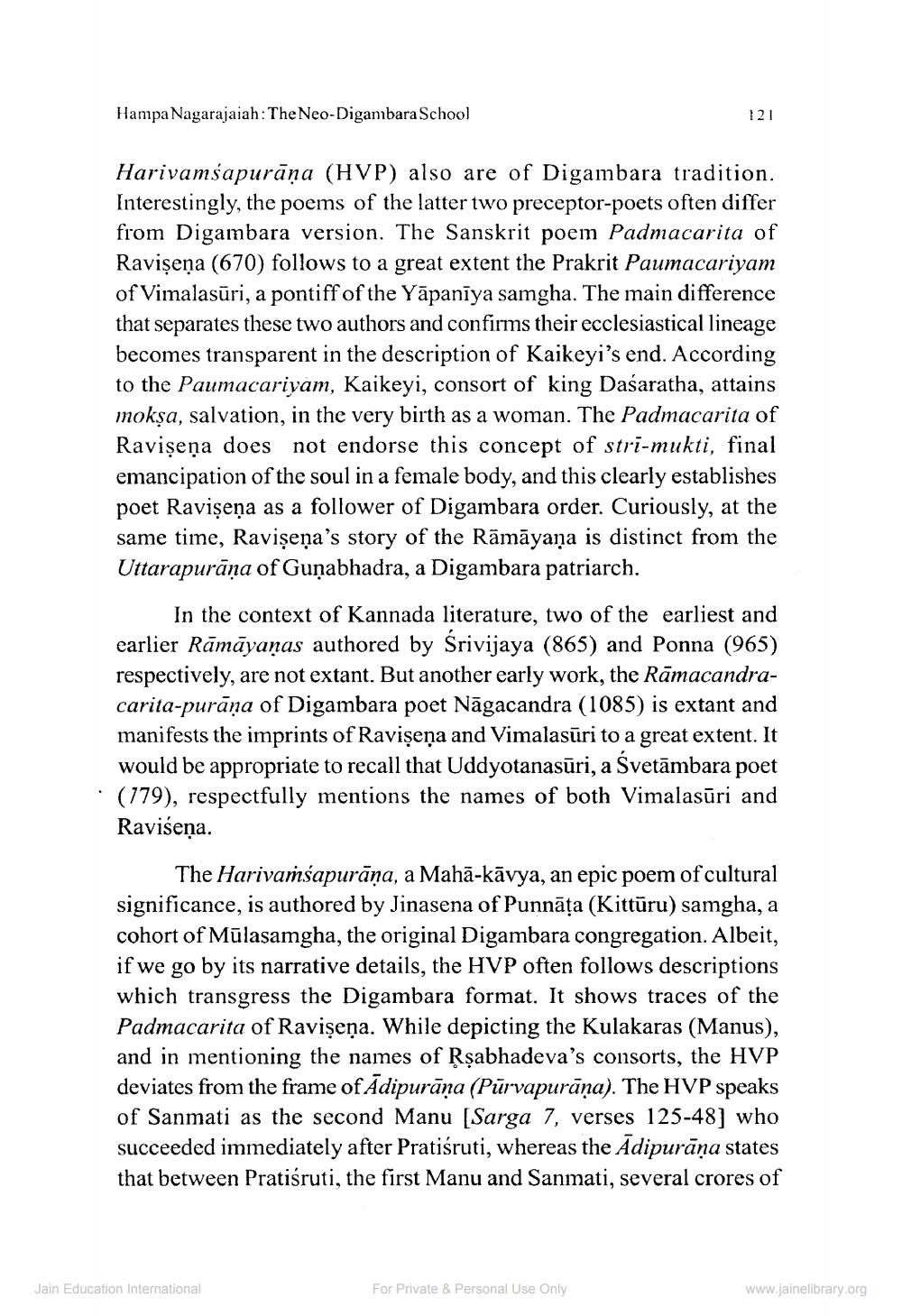________________
Hampa Nagarajaiah: The Neo-Digambara School
121
Harivamsapurāņa (HVP) also are of Digambara tradition. Interestingly, the poems of the latter two preceptor-poets often differ from Digambara version. The Sanskrit poem Padmacarita of Ravisena (670) follows to a great extent the Prakrit Paumacariyam of Vimalasūri, a pontiff of the Yāpanīya samgha. The main difference that separates these two authors and confirms their ecclesiastical lineage becomes transparent in the description of Kaikeyi's end. According to the Paumacariyam, Kaikeyi, consort of king Daśaratha, attains moksa, salvation, in the very birth as a woman. The Padmacarita of Ravişeņa does not endorse this concept of stri-mukti, final emancipation of the soul in a female body, and this clearly establishes poet Ravişeņa as a follower of Digambara order. Curiously, at the same time, Ravişeņa's story of the Rāmāyaṇa is distinct from the Uttarapurāņa of Gunabhadra, a Digambara patriarch.
In the context of Kannada literature, two of the earliest and earlier Rāmāyaṇas authored by Srivijaya (865) and Ponna (965) respectively, are not extant. But another early work, the Rāmacandracarita-purāņa of Digambara poet Nāgacandra (1085) is extant and manifests the imprints of Ravişeņa and Vimalasūri to a great extent. It would be appropriate to recall that Uddyotanasūri, a Svetāmbara poet (179), respectfully mentions the names of both Vimalasūri and Ravišeņa.
The Harivaṁsapurāņa, a Mahā-kāvya, an epic poem of cultural significance, is authored by Jinasena of Punnāța (Kittūru) samgha, a cohort of Mūlasamgha, the original Digambara congregation. Albeit, if we go by its narrative details, the HVP often follows descriptions which transgress the Digambara format. It shows traces of the Padmacarita of Ravişeņa. While depicting the Kulakaras (Manus), and in mentioning the names of Rşabhadeva's consorts, the HVP deviates from the frame of Adipurāņa (Pūrvapurāņa). The HVP speaks of Sanmati as the second Manu [Sarga 7, verses 125-48] who succeeded immediately after Pratiśruti, whereas the Adipurāņa states that between Pratiśruti, the first Manu and Sanmati, several crores of
Jain Education International
For Private & Personal Use Only
www.jainelibrary.org




